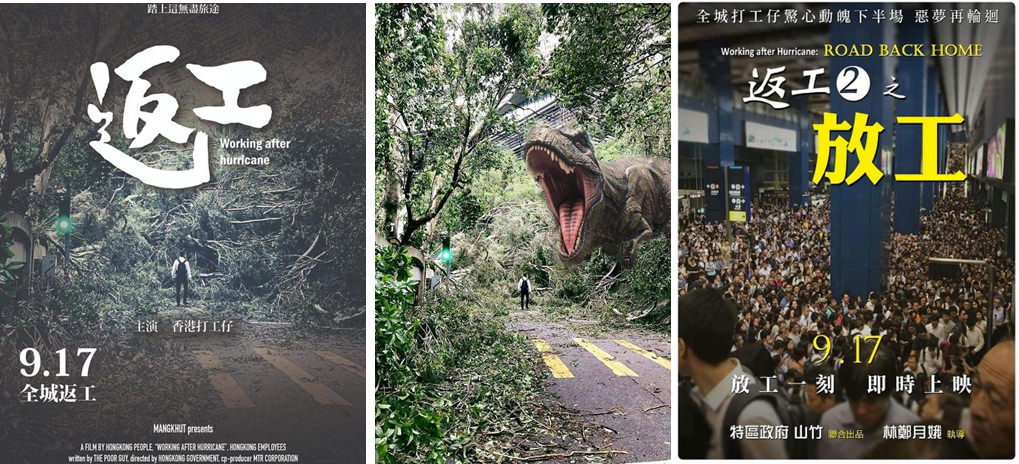What we learnt from Typhoon Mangkhut, the most extreme climatic event recorded in Hong Kong
In the summer of 2018, the most intense super-typhoon ever to directly hit Hong Kong brought flooding, power outages and widespread damage to buildings and property. Super typhoon Mangkhut also uprooted thousands of trees across the region, blocking roads and making it practically impossible for thousands of people to get back to work the following day. However, the impacts of this extensive treefall could be seen far beyond the built-up areas of the city.

Figure 1. Humour from the destruction. Memes in the wake of super-typhoon Mangkhut took a light-hearted view of the problems caused by widespread treefall.
On the upper slopes of KFBG, a group of keen scientists embarked on a journey to learn more about the impacts of extreme weather events on the native vegetation of Hong Kong in order to devise suitable planting methods to help improve the health and resilience of our forests.
Hong Kong’s forests are fragile. The main reason for this is the historic clearance of primary vegetation, which led to a sharp reduction in biodiversity and soil fertility. Combined with the countless man-made forest fires that have swept across the countryside over the years ever since, all that remains is ecologically comprised, low resilience secondary forest.

Figure 2. Man-made secondary forests differ fundamentally from natural, primary forests, both in their species composition and in terms of their resilience to extreme weather.
A study to assess the impact of Typhoon Mangkhut on the forests of Hong Kong
In collaboration with The Hong Kong Polytechnic University, a study assessing the impacts of typhoon Mangkhut on Hong Kong’s secondary vegetation, together with recommendations for restoring ecological resilience, has just been published (Abbas et al, 2020).
To assess the damage, meteorological and remote sensing data were combined with an analysis of land cover, topographic variables and the successional age class of different forests, before and after the typhoon.
A significant proportion of forest in Hong Kong is dominated by monocultural exotic plantations or regenerating secondary forest with a very limited species pool. The authors of the study found that the upper canopy of these forest types suffered extensive damage compared to biodiversity rich natural forests. This suggests that secondary forests and monocultural plantations are less able to withstand strong storms. Moreover, trees at higher elevation were more exposed to stronger winds and were accordingly found to be most severely damaged.
One other major finding is that two dominant species of secondary forest, Machilus chekiangensis and Mallotus paniculatus, share very similar functional traits (in terms of their habitat requirements, growth pattern, wood density and so on), making them equally susceptible to the same pests and other environmental threats. This suggest that Hong Kong’s forests generally have low resilience to natural disasters. On top of that, individual trees in poor health due to fungal infections and with structural defects such as forked trunks and proved more likely to be uprooted or seriously damaged by the typhoon.
In some cases, climatic events create opportunities for natural regeneration. However, in the case of Hong Kong, such phenomena could just represent the continuation of a vicious cycle whereby regeneration leads only to the recruitment of seedlings from the same, very limited range of species, simply because the available species pool in our secondary forests is comparatively poor.
Therefore, not only does the very nature of Hong Kong’s secondary forests and monocultural plantations make them extremely vulnerable to extreme weather events, it also severely curtails their capacity to recuperate resilience. This study suggests that in order to obtain stronger, more resilient forests, it is first necessary to enhance tree species diversity. This will entail artificially planting a broad mix of species resembling that found in primary forest.
Climate change has brought about an increased number of unpredictable climate events, and we can only expect more super-typhoons in future. In the face of this pending destruction, the best we can do is to understand its impacts and to devise informed forest management strategies to restore healthy, diverse forest that is resilient to severe weather—not mention better for own wellbeing and for that of our wildlife.
Reference:

